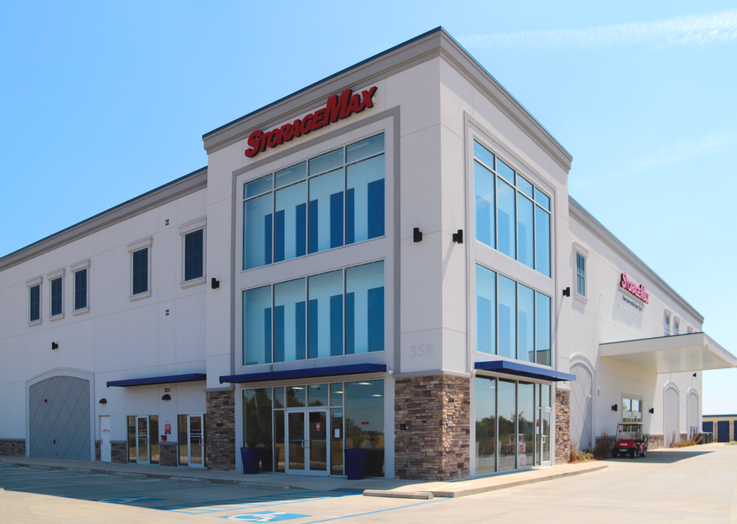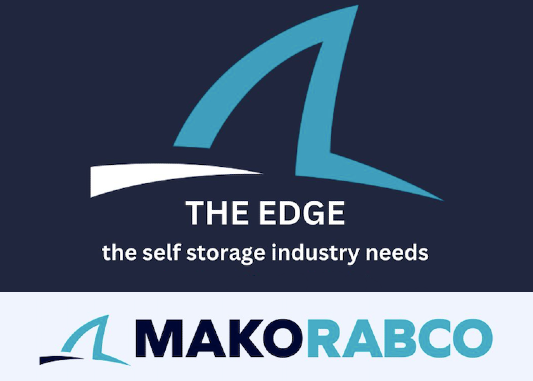The Epic Shift In Ownership: How It Happened & What It Means
Since its birth in the United States more than 60 years ago, the self-storage sector has evolved to a $58.26 billion industry. Once a temporary way to earn income on land investments until something more permanent was viable, the hastily erected metal warehouse buildings are seemingly now out of fashion, being replaced by architecturally rich, multistory facilities with features such as controlled climates, video surveillance, multi-purpose lobbies, and more.
Today, the self-storage industry is on the brink of another epic shift. The industry is seeing a dizzyingly rapid consolidation of ownership as developers and investors rush to be a part of this asset class. This means that many small, mom-and-pop business entities that have historically owned the lion’s share of self-storage properties are being edged out, replaced by institutional investors (REITs) and other large investment groups.
Spurred by a combination of population growth and post-pandemic demand, the number of households renting self-storage units was at an all-time high of nearly 14.5 million in 2022, or 11.13 percent penetration, according to the 2023 edition of the Self Storage Demand Study published by the Self Storage Association. This was to the benefit of the approximately 70 percent of self-storage facilities owned by private entities with fewer than five assets in their portfolio.
There’s no doubt that self-storage is a healthy industry that continues to grow; however, this time, expansion will be driven not by independent operators but by institutional investors and other larger entities. In just a few years, fewer than half of all self-storage businesses will be harnessed by small, private operators.
A Heritage Of Mom-And-Pop Owners
The self-storage industry has historically been seen as a business class with relatively low barriers to entry for entrepreneurs seeking a steady profit with minimal investment. Local owner-operators have successfully proven the business model of a low-touchpoint, minimally staffed operation with steady reward.
It’s a typical small business environment full of pride of ownership. Mom-and-pops ensure the facilities are well maintained, even if they aren’t fancy. Most are single-story structures with exterior, drive-up access and roll-up doors—not many frills, but they serve their purpose. While on-site staff is typically not “9 to 5,” these owners know their customers and personally respond to their requests.
With little stress and minimal tenant turnover, owning a self-storage facility emerged as a good side hustle or a post-retirement income stream for many rural landowners.
Recession-Resistant Reputation
It took an economic downturn (or three) to push self-storage into the fringes of the commercial real estate spotlight and onto the radars of larger investors.
During the recessions of the late 20th century, and again in 2008, self-storage held steady while the housing market, retail and restaurants, and other industries struggled. While customers were tightening their belts on other expenses, many retained their storage units. Why? Budget constraints limited homeowners, restraining some who sought larger homes and forcing others to downsize, thus boosting the demand for the storage product.
The recent pandemic also carried self-storage into the investment spotlight. While residential construction and the housing market screeched to a halt, self-storage prospered. Room was needed at home for temporary classrooms or workspace. That meant home furnishings and belongings needed space away from home. Count that as another boost for self-storage.
And when demand peaks, it’s easier for this asset class to capitalize. Rents can be quickly adjusted up to push revenue. The month-to-month lease structure of self-storage allows owners to quickly increase rates to capitalize on demand or downshift to be more competitive when demand softens. It’s a practice similar to hotel room pricing, but unlike the hospitality world, self-storage requires far less management than hotels.
Further stabilizing this sector, unlike multifamily housing, where the eviction of nonpaying clients is a lengthy and arduous process, removing non-paying storage tenants is relatively easy, allowing non-performing units to quickly return to inventory.
And many times, self-storage facilities fit where other products can’t or won’t. Geographically undesirable lots on a market’s periphery, where building costs are often significantly less, are well-suited for self-storage, an asset class that collects similar rents per square foot as residential, retail, or office properties.
With these fundamentals and lucrative characteristics, it’s easy to see why institutional investors have taken notice of self-storage since the turn of the century. According to Forbes, throughout 2001 to 2023 the average return on self-storage was 20.87 percent.
Overall, REITs and other large investors consider self-storage a safe asset class. They recognize that self-storage benefits from a lower expense ratio and a higher investor return threshold compared to most other property types. Those self-storage investors “early” into emerging markets also find that acquiring self-storage assets, or the land on which to build them, is significantly less competitive than buying more notable (or glamorous) asset types such as multifamily, retail, or mixed-use developments.
Investing in self-storage also offers owners the opportunity to invest in a targeted segment of a market. Typically, self-storage facilities target residents within three to five miles, minimizing the cannibalization of other properties or a hyper-focus of capital placement.
The Next Generation
As the ownership of self-storage properties increasingly shifts to institutional investors, what does it mean for the industry? For one thing, the self-storage experience is rapidly changing for its customers.
While the mom-and-pop owners often stuck with their own tried-and-true ways of managing their properties, newer investors deploy all the tools at their disposal (technology, in-house marketing complete with creative and digital teams, and more) to infuse the product with the proverbial bells and whistles.
And that’s a good thing, as millennials and Gen Z, the newest class of renters, follow the bells and whistles. They seek accessibility via digital platforms and are quite accustomed to gathering input and managing all aspects of their lives via mobile devices and the internet. These customers want to search for the closest facility on Google and explore property features, pricing plans, size options, and other elements on a website. Why worry about the personal touch that so many independent operators deliver when an app unlocks seamless access to a storage unit?
Not only are emerging technologies creating a better user experience for today’s largest renter segment, but they are also establishing efficiencies for the institutional operators. Automation and digital platforms require less manpower and on-site staffing. Today, cameras, improved lighting, fencing, and code-accessible gates and entry points address the top priority of security and keep the facility secure. Even when questions and other situations arise where only an actual human will do, operators utilize call centers or on-call staffers to address challenges rather than full-time, on-site employees.
Self-storage buildings are also looking a bit different than those of the past. Attractive façades, sleek lobbies, and climate-controlled interiors have elevated the self-storage experience while easing these facilities into communities where zoning commissions previously rejected the product. Some multilevel facilities even offer ground-floor retail space, expanding the amenities these properties bring to the community.
However, traditional mom-and-pop operators have been hesitant to jump on the facelift and high-tech bandwagons. Why fix what isn’t broken? And who can argue with them when they have facilities that are 100 percent rented? Obviously, their hands-on approach has worked for decades, so an investment in new technology seems pointless.
Even for those operators who adopt the shiny new features to compete with newer facilities owned by deep-pocketed investment firms, they are often two or three steps behind. After all, many owner-operators adopted this business due to its aversion to shifting trends, so sticking to the status quo seems logical. It works in some markets.
What’s Next For Self-Storage
Today, a small cast of characters dominates the industry. According to the 2024 Self-Storage Almanac, approximately 38 percent of all self-storage space (by net rentable square footage) is owned by five public companies. While some brands are well-known due to their decades of operational history, many new players are emerging into the self-storage space. For example, the third largest self-storage owner, CubeSmart (formerly U-Store-It Trust), was founded in 2004, and National Storage Affiliates Trust, one of the newest, dominating investment trusts, formed in 2013, was backed by $100 million of institutional capital to acquire small, well-performing self-storage facilities. Today, that REIT is the fifth largest self-storage operator.
Following years of hyper-activity and transition, a slowdown is at our doorstep. As with all sectors, interest rates are impacting buying and selling within the industry, not to mention the housing market as well. Sustained high interest rates are lowering property values, making it difficult to find deals that were once quite plentiful. In particular, this is affecting properties in secondary and tertiary markets while those in primary markets have typically maintained their values.
It's possible that the current economy will deter additional new developers and CRE investors from wanting to hop on the self-storage bandwagon, giving the industry a chance to establish itself in its new normal.
Overall, the predicted softening of interest rates will be favorable for self-storage, even if they don’t decrease as drastically as industry watchers are anticipating. As the rates drop, more properties will be sold, acquired, and/or improved. The economy will also ignite the housing market and boost the residential market with the resumption of new builds and developments. As previously mentioned, an uptick in households on the move drives self-storage rentals.
Who Will Be The Victors?
With so many new facilities opening (estimated to be over 100 million square feet of new storage units delivered between last year and this year, according to StorageCafe), many markets are at risk of being oversaturated if they aren’t already. In particular danger are markets that experienced population booms that are now leveling out, such as the hot secondary cities of Charlotte, N.C., and Nashville, Tenn.
With consumers having many choices now about where to lock up their precious belongings, storage facilities that are strategic and intentional with how they market to and retain customers will be victorious. Undoubtedly, operators investing in marketing (in particular high-traffic channels such as Google or Facebook, optimized websites, or even grassroots campaigns) will thrive.
Yet, it remains increasingly important to understand the demands and needs of every customer segment. While technology has made it possible to run a storage facility with little on-site staffing, having a call center equipped to troubleshoot is essential, especially one that is accessible in the evenings and on weekends. While there’s been a trend toward the architecturally attractive, multilevel, climate-controlled facilities, some customer segments prefer a more traditional product. Even today, customers seek one-story facilities with larger units and drive-up access.
Dynamic pricing will also play a part in determining which storage companies succeed. In the fight for occupancy, operators that adjust prices in order to remain competitive with other nearby facilities, will come out on top. Getting a customer into a unit at a lower price, then adjusting the price later, quickly boosts occupancy rates without too much hit on profits.
The most important lesson for operators to understand is that when investing in self-storage, it is an investment in a business as well as a real estate asset. Keeping a facility well-maintained, equipped with the best technological solutions, and competitive to market influences are all essential to maintain occupancy and profitability.
The bottom line: The consolidation of self-storage ownership will change the landscape of this industry forever. However, the fundamentals of understanding the market as well as the customer will forever drive the success of the self-storage sector for both mom-and-pop owners and large institutional investors.
_
Frank DeSalvo and David Perlleshi are the leaders of Franklin Street’s national self-storage Investment Sales Platform, providing comprehensive real estate solutions for owners and investors of self-storage assets throughout the country. They have a combined $250 million in self-storage transactions throughout their careers.

This content was first published in Messenger, the monthly print
and digital publication of Modern Storage Media, exclusively for subscribers. To be among the first to receive stories like this, subscribe to Messenger today.
Further Online Reading:
Chain of Command: What Hotel Consolidation Means For The Self-Storage Industry
More Content
Popular Posts
Recent Posts
When Germantown High School in Gluckstadt,...
It’s comforting to know that no matter how...
A very wise self-storage expert once said...
Senate Bill 709 (SB709) has many in the...
In January, self-storage industry veteran...
In April 1984, the first non-stop commercial...
Raise your hand if you’ve ever made plans,...
Everyone knows it: Investing in real estate...












